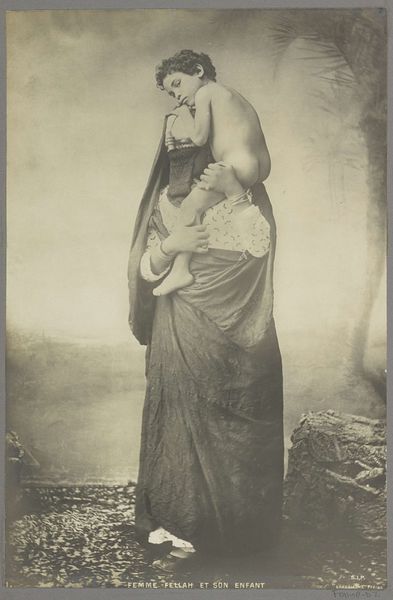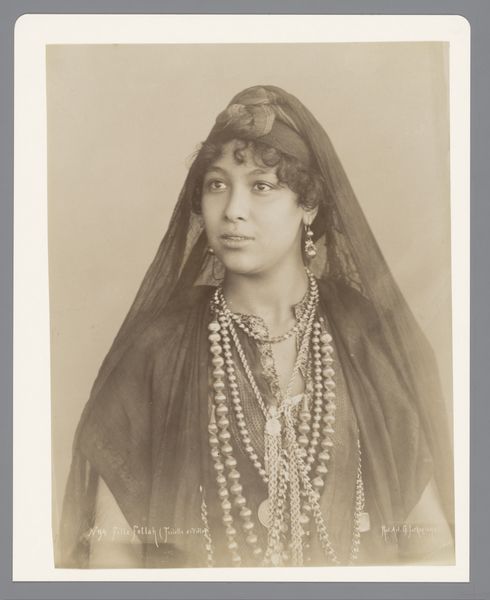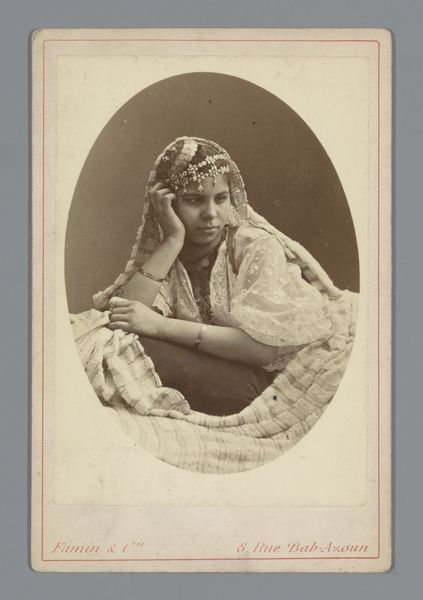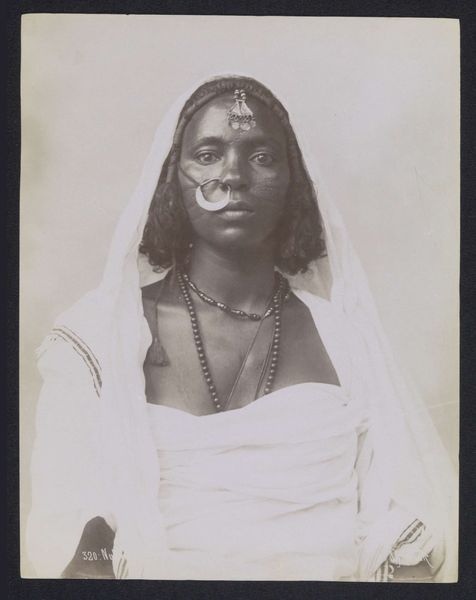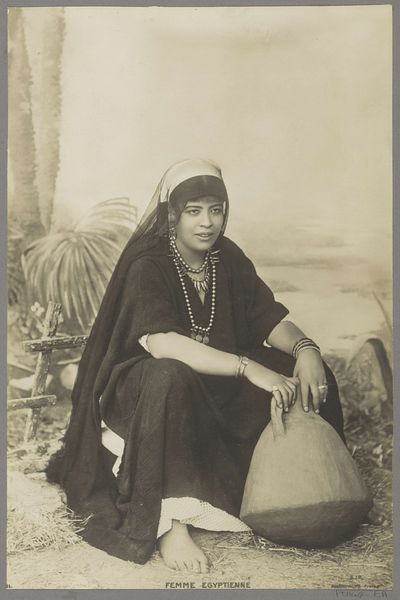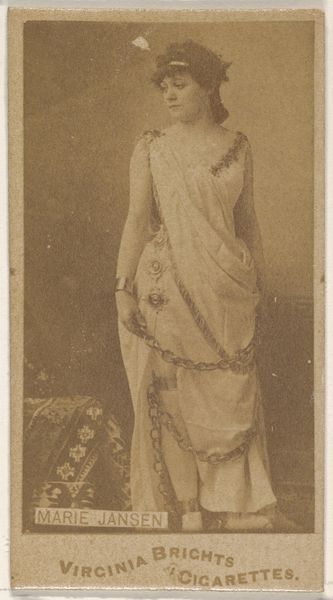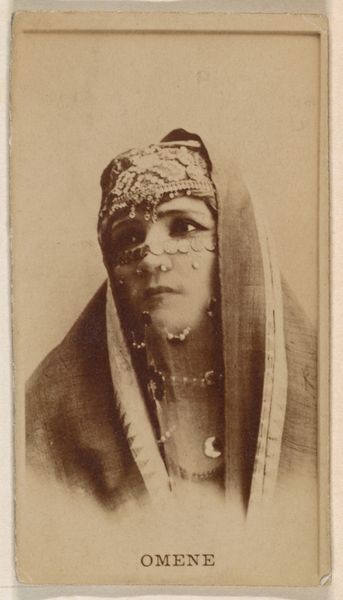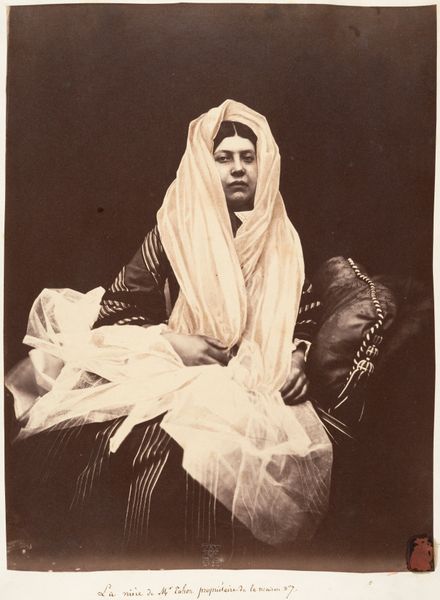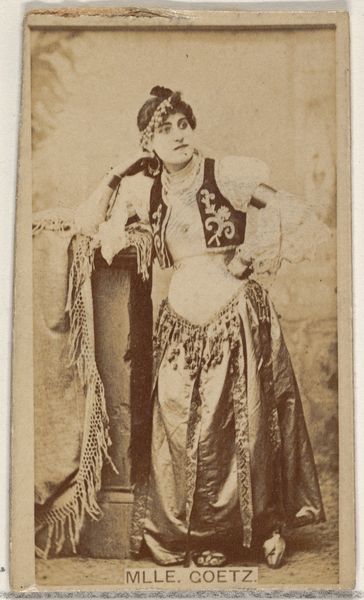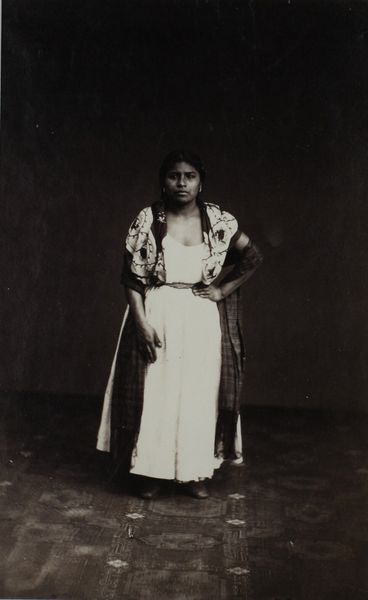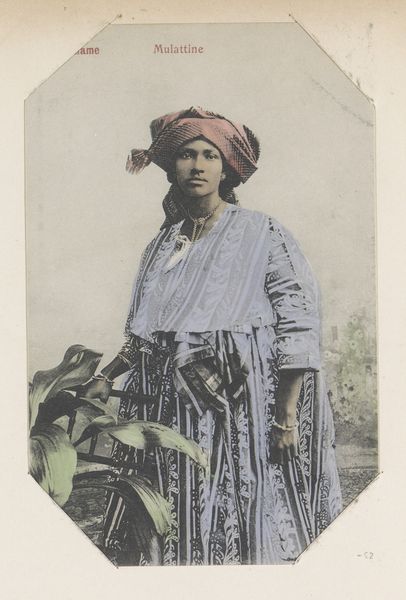
photography
#
portrait
#
african-art
#
photography
#
historical photography
#
historical fashion
#
folk-art
#
orientalism
Dimensions: height 119 mm, width 86 mm
Copyright: Rijks Museum: Open Domain
Curator: Before us is a portrait, a photograph really, entitled "Portret van een jonge Egyptische boerenvrouw" or "Portrait of a young Egyptian peasant woman," captured by Andreas Daniel Reiser sometime before 1905. What strikes you first about this image? Editor: The weight of cloth, certainly. It feels heavy, the way the fabric drapes and catches light. And there's a compelling sense of posed-ness, almost performative labor evident in the details of her attire. It's not simply *being* photographed; it is consciously presented to a European gaze. Curator: It’s a striking thought. Her gaze meets ours with a certain frankness, but yes, you feel the construction involved. It’s staged yet intimate. It’s hard to dismiss its orientalist style: How do you interpret Reiser's approach to his medium here? Editor: Well, considering the context, photographic processes weren't quick. Preparing plates, setting the exposure. The choice of clothing—that ornate bodice—and jewelry suggests an attempt to document, almost inventory, local materials and craftsmanship. Also to emphasize otherness and to exotify the subject... The cloth IS the story; it tells of trade routes, dyeing techniques, labor invested... Curator: So it becomes almost a study of ethnography filtered through a photographic lens, documenting traditions perhaps already fading then. It speaks of place and the cultural value attributed to textiles in this setting. And beyond that, it gives such weight to the role fashion played in society and cultural dynamics. What can we infer about the value of material things here? Editor: Possibly the intended exoticism flattens complexity. Look at her beaded necklace or embellished neckline, indicating not just regional identity but intricate weaving skills; It shows a whole supply chain made by anonymous, invisible people. Think about that handwork against the rapid industrialization happening elsewhere. Her gaze perhaps speaks volumes about this imbalance in access to material benefits. Curator: Indeed. In those quiet ways it allows for many reflections. And yet it draws our eye back to this woman, to her undeniable strength framed against these complex networks. This photo makes me reconsider what the relationship of past to present really looks like. Editor: Exactly, this historical image reframes "contemporary" anxieties, and asks deeper questions about social production: Who does the work, who consumes, who benefits? The cloth in this photograph becomes a site of these larger narratives.
Comments
No comments
Be the first to comment and join the conversation on the ultimate creative platform.
